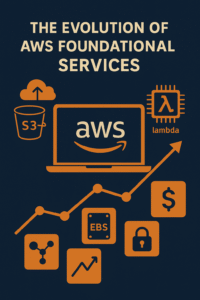There’s that old saying “Dont put all your eggs in the same basket” which really stands out to me today.
On July 19, 2024, a significant software update released by CrowdStrike caused widespread disruption across millions of Microsoft Windows machines globally. This event highlights the critical importance of thorough software testing and the potential ramifications of deploying faulty updates. In this blog post, we will explore what happened, why it matters, and what steps businesses and IT professionals can take to safeguard against similar incidents.
What Happened?
CrowdStrike, a prominent cybersecurity company, released an update for their Falcon Sensor software. This update, however, contained a critical flaw that led to severe disruptions:
- Faulty Driver: The update included a driver known as Channel File 291, which contained null bytes. This flaw caused a logic error in the Windows kernel, leading to widespread system crashes.
- Blue Screens of Death (BSOD): As a result of the faulty driver, millions of Windows machines experienced BSODs, entering into a boot loop that rendered them unusable.
- Global Impact: The incident affected various sectors, including commercial aviation, media, banking, healthcare, and emergency services. Flights were grounded, broadcasters went offline, and critical services faced disruptions.
Immediate Consequences
The update’s impact was felt globally, causing significant operational and financial damage:
- Commercial Flights Grounded: Airlines faced disruptions, causing flight delays and cancellations.
- Media Outages: Media outlets like Sky News experienced temporary outages.
- Banking and Healthcare Services: Critical services in banking and healthcare were disrupted, affecting operations and emergency response times.
- Emergency Services: 911 call centers were affected, impacting emergency responses.
Technical Breakdown
The root cause of the issue was traced to a specific driver included in the update:
- Channel File 291: This driver was installed in the Windows kernel and contained null bytes. Although the null bytes did not directly cause the crashes, they triggered a logic error that led to the BSODs.
- Logic Error: The error in the system’s logic due to the faulty driver resulted in the widespread crashes and boot loops.
CrowdStrike’s Response
In the aftermath of the incident, CrowdStrike took several steps to address the issue and mitigate its impact:
- Postmortem Analysis: CrowdStrike conducted a detailed analysis to understand the root cause of the problem and prevent future occurrences.
- Public Statement: The company issued a public statement acknowledging the issue and outlining the steps taken to resolve it and assist affected users.
Why is This Important?
This incident underscores several critical aspects for businesses and IT professionals:
- Vulnerability Management: The importance of rigorous testing and vulnerability management before deploying updates cannot be overstated. Ensuring that updates are thoroughly tested can prevent such widespread disruptions.
- Disaster Recovery Plans: Having robust disaster recovery and incident response plans in place is crucial for minimizing the impact of unexpected system failures.
- Cross-Vendor Compatibility: Regularly testing the compatibility and integration of third-party security solutions with primary systems is essential to ensure seamless operation.
What Can You Do?
To protect your systems and mitigate the risks associated with software updates, consider the following steps:
- Regular Testing: Ensure that all software updates are thoroughly tested in a controlled environment before deployment.
- Backup Plans: Maintain up-to-date backups and have a recovery plan in place to quickly restore systems in case of failure.
- Monitoring and Alerts: Implement monitoring and alert systems to quickly identify and respond to any issues that arise after updates are deployed.
- Vendor Communication: Stay informed about updates and patches from your vendors and promptly apply critical updates to minimize vulnerabilities.
FINAL THOUGHTS
What if all these places effected diversified their technology? What if they had an on-premise HA of sorts? What if, their core functions were running on Red HAT? Yeah, you I suppose you could use another cloud provider as a backup too. But if the first bucket is known to let an egg or two roll out occasionally, why not just use a different type of basket all together for your other hand? Hope fully this makes sense to you, but as you can see, i’m a huge Linux advocate. There’s better ways to do this people. Let ME help YOU
The CrowdStrike update debacle serves as a stark reminder of the complexities and risks involved in managing cybersecurity and software updates. By learning from this incident, (DON’T PUSH UPDATES ON A FRIDAY NO MATTER WHAT KIND THEY ARE) businesses can take proactive steps to strengthen their defenses and minimize the impact of future disruptions. No one thinks of Plan B until Plan A fails.
For more detailed information on the incident and to stay updated on the latest in cybersecurity, you can refer to CrowdStrike’s official report and other reliable sources like Wikipedia.



